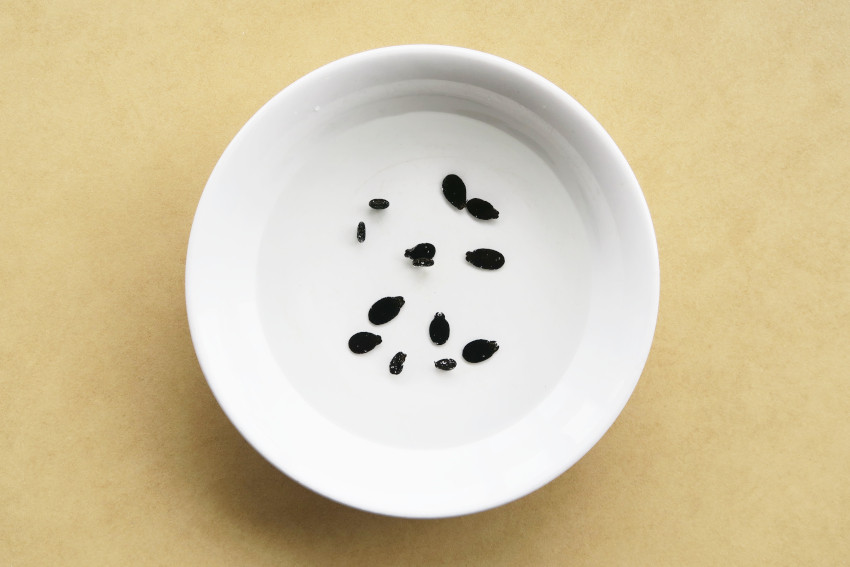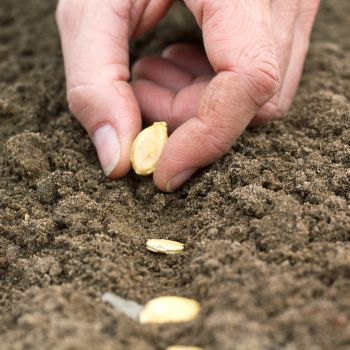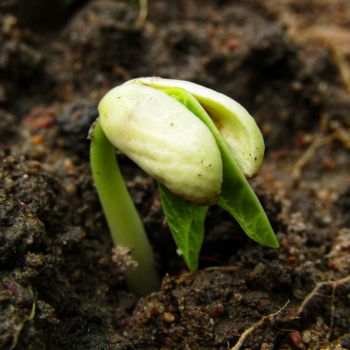A good gardener likes to reduce uncertainty, and to have plans in place for all potential problems. This is especially true when it comes to germination. Unreliable germinators waste precious time at the start of the growing season, and the seedlings that come through late will always be playing catch up.
So anything that can take the lottery out of germination is to be welcomed. One of the simplest tricks that gardeners have long relied on to improve germination is to pre-soak seeds before sowing them.
But is this traditional technique really necessary? There are arguments for and against, but first it's useful to look at the thinking behind soaking seeds.
Surviving the Winter
Many seeds have evolved to survive winter in a dormant state before germinating in spring. They'll need to withstand extremes of cold, wet, or dryness, maybe even passing through an animal at some point along the way. This means they need to be tough.
And it also means they can be reluctant to germinate, with their hard protective shells forming a barrier that the seed embryo needs time to break through. Irregular germination is fine in nature so long as enough seeds make it to produce the next generation. It's less welcome for a gardener who wants more predictability in their sowing timetable.
Soaking the seeds before sowing is an attempt to overcome this natural reluctance and improve the germination success rate.
Does It Work?
Soaking seeds can certainly speed up germination, and encourage a batch of seeds to germinate at a more uniform pace. However, there's little evidence that soaking improves overall germination rates for most high-quality seeds.
The soaking tactic streamlines germination in four main ways.
- The water starts to soften and degrade the tough seed shells, making it easier for the seed embryo to sprout.
- The increased moisture level signals to the seed that spring has arrived and it's time to grow.
- Some seeds, particularly those which develop in fruit, have chemicals which prevent premature germination, and these need leeching away. In nature, spring rains do the job, but soaking is a more reliable and controllable option.
- Soaking helps to overcome drainage problems with excessively sandy or clay soil, providing stable conditions to get the crucial first stage of germination under way.
Which Seeds to Soak
Soaking isn't always necessary, and shouldn't be a knee-jerk reaction. Bear in mind that many modern seeds have been bred for reliable germination, in contrast to wild varieties, and so soaking may do little to improve things.
However, some seeds can certainly benefit from a soak. It can help to break down the thick coats of seeds such as nasturtium and beetroot, or the tough shells of carob or luffa. In general, if a seed is large, tough, and maybe wrinkled or knobbly, then soaking can be a useful option.
Avoid soaking small seeds such as lettuce, radish, and so on. Germination of these species often doesn't need a lot of help, and wet seeds are much more difficult to handle, leading to over-sowing and waste.
Lastly, tropical native plants like chillies need a long growing season to ripen their fruit. If your local climate is on the edge of viability, and you face an annual race to ripen, soaking can help you squeeze in a few more days or even weeks to help your plants be more productive.
Reasons Against
However, soaking isn't a silver bullet for germination problems. Soak the wrong seeds for too long and you risk 'drowning' them, where they begin to rot and ferment before germination can start.
On a more practical level, soaking adds another layer of complexity to the whole plant-growing process. It's one more point of failure, and an extra level of work. If you have no compelling reason to soak, don't do it just because you feel you should.
And a final reason not to soak is that it doesn't help you tell if a seed is viable or not. An idea has grown up that good seeds will sink while bad ones float, but this can't be relied on. The only real way to tell if a seed will germinate is to let it happen. Using soaking as a test likely means you'll throw away lots of perfectly good seed.
But nonetheless, if your sowing regularly suffers from germination difficulties, soaking can make a useful experiment. If you decide to try it, here's what to do.
Simple Soaking
The basic method is to fill a bowl with moderately hot water from the tap, before adding the seeds and leaving them to soak as the water cools. Don't use boiling water or you risk cooking the more delicate varieties of seeds.
Deciding on how long to leave the seeds soaking depends on their size and toughness, and is something that you'll learn with experience. Some tender seeds will need only a couple of hours to begin swelling, while others can safely be left for 12 hours or even longer.
However, aim to under-soak rather than over, as leaving them for too long risks rot setting in. If available check seed packets for any soaking recommendations, and be careful not to overshoot. Regularly examine the seeds, and remove them from the water once they are noticeably swollen or wrinkled, but haven't yet split.
After the required soaking time, drain the seeds and sow as normal. Don't hang around: leaving the wet seeds exposed to the air can mean fermentation sets in surprisingly quickly, ruining the seeds. Once the seeds are in the soil, keep it moist until germination, which will hopefully happen sooner than it otherwise would.
Variations on the Method
As a variation on the basic method, some gardeners like to use a mild acid solution for soaking. Simply add a teaspoon or two of vinegar to the water, or use weakly brewed tea or coffee.
The idea behind this is to emulate the acidic conditions of an animal's digestive system, speeding up the effects on the seed shell. Whether this is worth the trouble is open to debate, but as with all things green-fingered, experiment and experience will help you decide.
And finally, to help particularly tough seeds germinate, you can combine soaking with scarification. This involves making a slight nick in the seed shell, or roughing it up a little with sanding paper. This lets the soaking liquid get to work more quickly, but there's also the risk of damaging the seed too much and preventing germination happening at all.
To Soak or Not?
For certain slow-germinating seeds, soaking can be a worthwhile exercise. However, a gardener's life should be kept as simple as possible, and tradition alone is no reason to insist on soaking. If you have no germination problems to deal with, there's probably no need for the extra work and complexity it creates.






